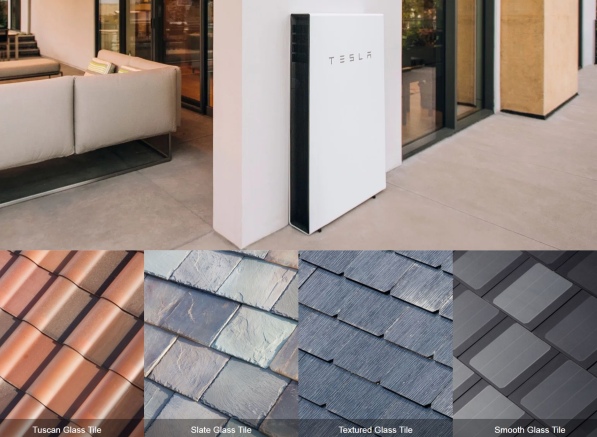Sometime last year I sent an email about Tesla’s solar panel roof shingles (yes, the car company now makes roof shingles). Basically, as you can see in the picture above, they look like traditional shingles but they collect solar energy. Now I’ve seen Tesla starting to promote its home battery called a Powerwall. Wanting to know more about how this product works (in case I see at an inspection) I did some research and thought you might like to know.
Essentially the Tesla Powerwall captures the energy their solar shingles (or solar panels) produce and stores it for later use (since panels can generate more electricity than your home can use during the day). With the Powerwall you can store that energy to power your home at night (or in the event of a power outage) instead of letting it go to waste.
For now though, I see two main issues. One, the Powerwall battery can only hold 13.5 of kilowatt hours. That’s not terrible, but the average home uses about 28 kilowatt hours every 24 hours. The other is cost. It looks like the average cost to purchase and install a Tesla Powerwall is about $10,000. Remember that doesn’t include the cost for solar shingles or traditional solar panels. So overall the investment would take a while to pay off. Considering the Powerwall can only store 13.5 of energy I don’t see how it makes much sense right now. But Tesla is known for rapid improvements to their batteries so in a few more years maybe it can store twice as much? I assume the cost would also continue to fall. Either way, I think it’s something that will be more common in homes in the future, but we’re still a long way from seeing them consistently in home inspections.
Sincerely,
Brett Six




